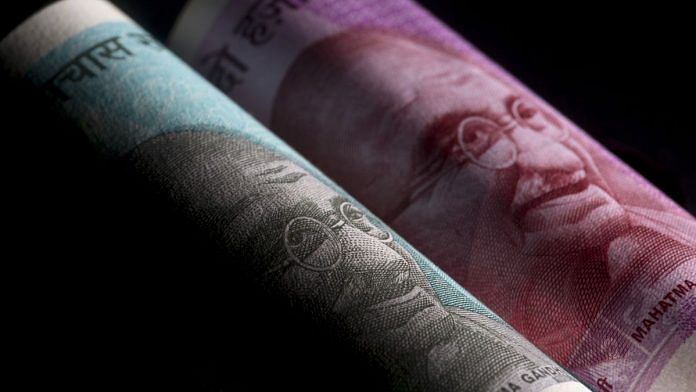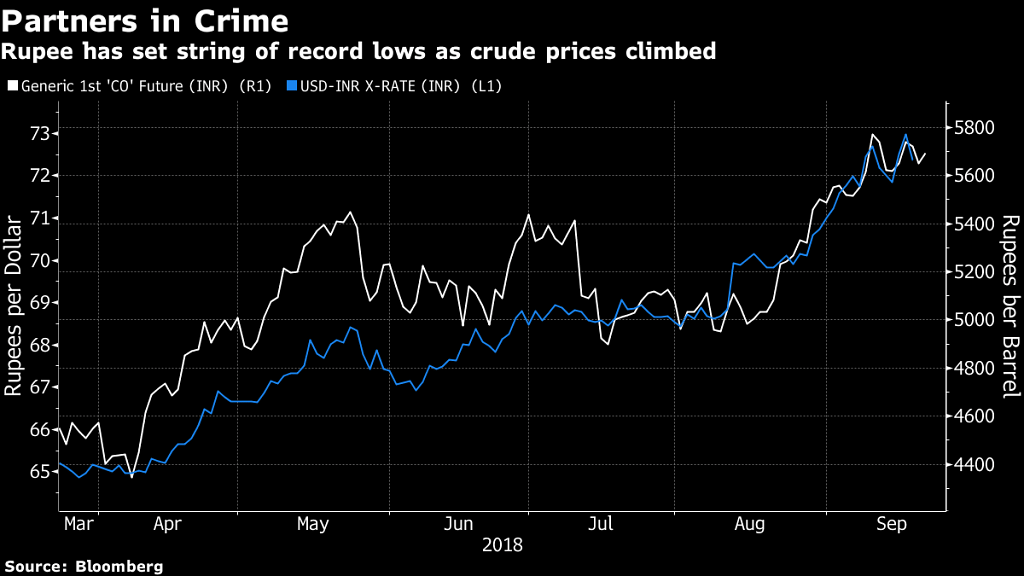The currency’s recent descent is said to be self-correcting to some extent as its weakness will help perk up exports.
India’s rupee may be set to recover as oil peaks out and investors realize the currency has been sold off too heavily amid the emerging-market rout, State Bank of India says.
The currency’s recent slide is also likely to be self-correcting to some extent as its weakness will help boost exports, said Shantanu Shukla, Singapore-based vice president for global markets at India’s biggest bank. While part of the rupee’s weakness has stemmed from the US-China trade war, he said this may actually benefit India’s economy as businesses look to source products from alternative markets.
“In the short term, the rupee is suffering from the market sentiment,” Shukla said in an interview this week. “Right now it’s contagion. Everything is being painted with the same brush. I don’t think beyond 70 is a number that the Indian rupee should trade at.”
The rupee is this year’s worst-performing Asian currency, dropping 12 per cent to set a succession of record lows. It reached an all-time low of 72.9750 per dollar this week. The currency may eventually strengthen back to 68, Shukla said, without giving a time frame.
India’s government has been seeking to stem the selloff, last week announcing a number of measures to stem the rupee’s slide. These included relaxing overseas borrowing restrictions on local manufacturers, reviewing whether to ease a cap of foreign ownership of corporate bonds, and considering limiting “non-essential imports.”
Worsening Deficit
These efforts have so far failed to halt the currency’s decline as buoyant fuel costs have pushed up India’s import bill and worsened its current-account deficit.
Relief may be in sight here, Shukla said. The surge in crude will encourage shale producers to re-enter the market, helping to cap the oil price at $80 to $85, he said.
The Reserve Bank of India may also tighten policy again to bolster the currency when it meets next month, he said. The central bank raised interest rates to the highest in two years in August.
The rupee’s plunge is evoking memories of slide of around 20 per cent from February to August 2013 during the so-called taper tantrum. India’s fundamentals have improved since then and it has a bigger war chest of foreign-exchange reserves, Shukla said.
“Smart institutional money will come back,” he said. “At some point, this whole fall will be stemmed and we will see money coming back.” –Bloomberg







